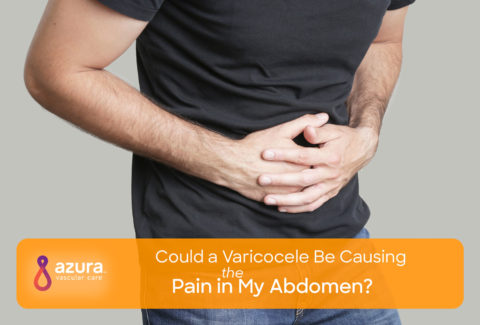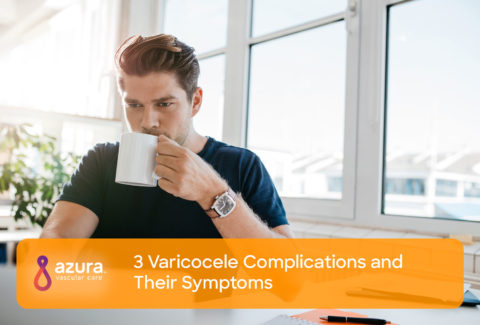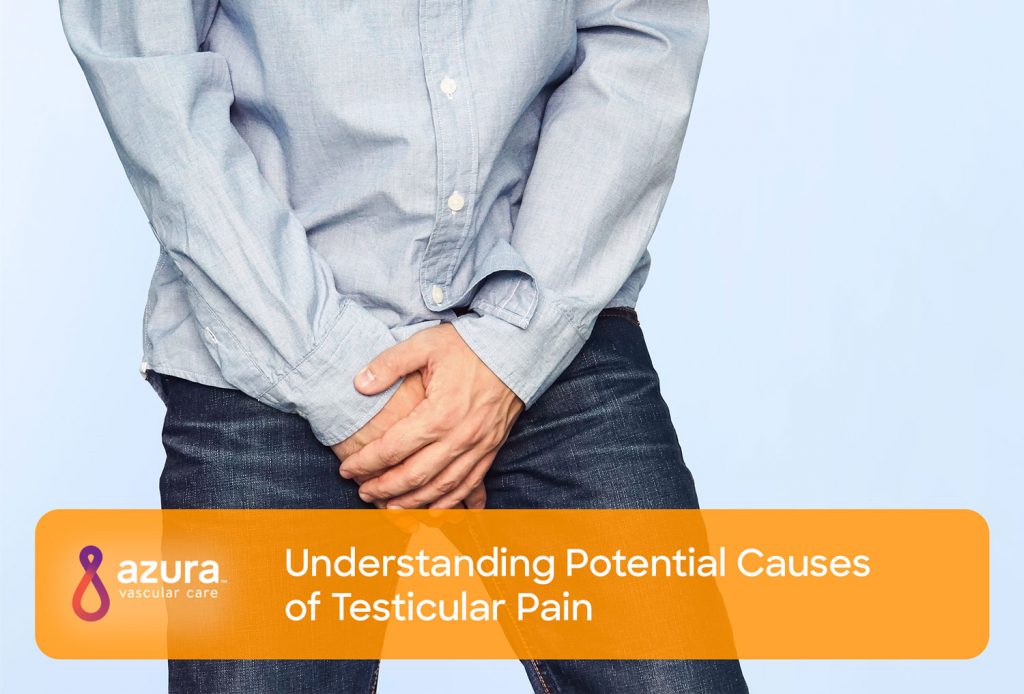
Because testicles are very sensitive, testicular pain can be quite uncomfortable and distressing. Many diseases and other health issues can cause pain in one or both testicles. Even a minor injury can cause pain. Symptoms can be very similar among the various causes, even those that require urgent attention. If you develop pain in your testicles, you should see a doctor to get it checked out so that your condition doesn’t worsen or cause permanent damage. (i)
The 6 Common causes of testicular pain
1. Varicocele
Varicocele is a type of varicose vein that can develop in the testicles. (ii) In healthy veins, valves work to keep blood flowing in the right direction. When these valves don’t function properly, blood may back up and pool, causing increased pressure. The vein can then become swollen or twisted. (iii)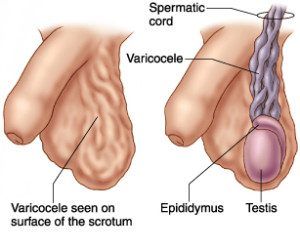
Varicoceles can develop without warning and they are not always painful. But they may affect your fertility by altering sperm production or sperm motility. (ii)
You could have a varicocele if you experience any of the following symptoms: (ii)
- Low fertility/infertility
- Dull or aching pain
- Swollen or enlarged testicles
- Pain that worsens when standing up
- Pain that worsens after physical activity
- Pain that is worse during hot weather
- Pain that eases when lying down
2. Testicular Injury
Injuries to the testicles are common, particularly among boys or men who are physically active. While such injuries can be painful, they will usually heal on their own.
However, you should see a doctor if you experience any of the following symptoms: (iii)
- Worsening pain
- Pain accompanied by a fever
- Pain accompanied by nausea/vomiting
- Blood in urine
3. Testicular Torsion
Some men may develop a condition known as testicular torsion. In cases of testicular torsion, the testicle rotates and cuts off blood flow to the scrotum. While an injury often causes testicular torsion, the condition can sometimes happen spontaneously. Testicular torsion is a medical emergency and requires immediate attention from a doctor. (iv)
4. Hydrocele
A hydrocele is the build-up of fluid around the testicle. (v) This condition often causes testicular swelling and dull, achy pain in the testicles. Sometimes the fluid will drain on its own, but if the condition worsens, treatment may be necessary.
5. Spermatocele
A spermatocele is a cyst which develops in the epididymis, the tube that transports sperm. (vi) These cysts are noncancerous and often painless. But if the cyst grows large enough, it may be painful. Large cysts may need to be removed by a doctor.
6. Testicular Cancer
If you’re experiencing testicular pain, you may wonder about the possibility of testicular cancer. Testicular cancer is rare, but most often affects young men between the age of 15 and 35. (vii) When diagnosed early, testicular cancer is often curable.
Symptoms of testicular cancer may include: (vii)
- A lump or swelling on one testicle
- Pain or discomfort in a testicle or the scrotum
- A feeling of heaviness in the scrotum
- A sudden collection of fluid in the scrotum
- Back pain or abdominal pain
- Swollen or tender chest
When Should I See a Doctor?
Testicular pain can sometimes be caused by a minor injury or strain, and the pain often fades away after a few days. But symptoms can sometimes persist over days, weeks, or even months. Severe or worsening pain should always be reported to your doctor. (iii)
Some testicular conditions do not cause pain or other noticeable symptoms but may still affect your fertility. If you and your partner are having difficulty conceiving, consult a doctor for further tests.
What Tests Can Help Diagnose Testicular Pain?
Regular self-exams can help diagnose testicular conditions early on. Some conditions may not cause painful symptoms, so it’s important to perform self-exams even if you feel healthy. (ii) Ask your doctor for guidance on how to perform a proper self-exam.
If you’re experiencing pain in the testicles, your doctor will most likely perform a physical exam to check for swelling, discoloration, or lumps. (viii) A physical exam can diagnose most testicular conditions, including varicocele. (ix)
Your doctor may also order an ultrasound to scan your testicles and scrotum. An ultrasound can help identify any cysts, tumors, or other structural abnormalities. If your doctor detects a lump or has concerns about your sperm production, he or she may perform a biopsy to determine what’s causing the problem. (viii)
How Is Testicular Pain Treated?
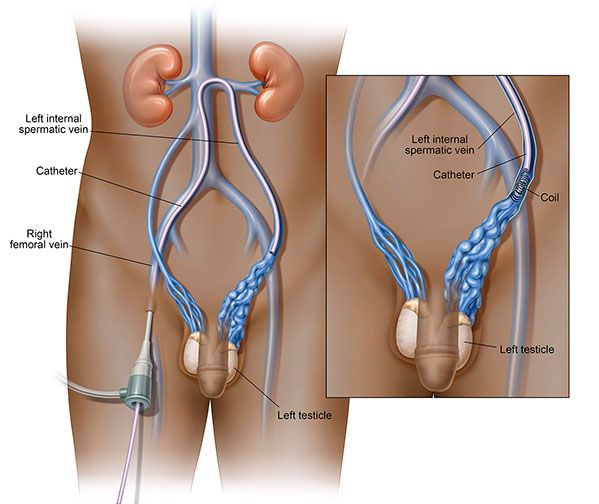 To successfully treat your pain, your doctor needs to determine its cause. Minor injuries may resolve on their own, while mild infections often clear up with a short course of antibiotics. But more severe conditions may require surgery or a consultation with a specialist.
To successfully treat your pain, your doctor needs to determine its cause. Minor injuries may resolve on their own, while mild infections often clear up with a short course of antibiotics. But more severe conditions may require surgery or a consultation with a specialist.
If you are diagnosed with testicular cancer, your doctor may refer you to an oncologist for surgery, radiation, or chemotherapy. Conditions such as testicular torsion or spermatocele may also require surgery to correct. (viii)
Many men with varicoceles benefit from a procedure known as varicocele embolization. During this procedure, a vascular specialist embolizes, or blocks, the affected vein. As the vein is no longer able to transport blood, it will close off and gradually shrink.
Embolization is a minimally invasive procedure and usually performed in an outpatient setting. The risk of complication is low and there is a minimal chance of scarring. The procedure provides fast, effective relief of testicular pain and may also help restore your fertility.
If you were recently diagnosed with a varicocele, you may have several questions about your condition and your treatment options. Azura Vascular Care offers a free information sheet that can help answer your questions about varicoceles. Download this information sheet or call 844-705-VEIN (8346) to schedule an appointment with a vascular specialist.
Sources:
(i) National Cancer Institute. Testicular Cancer. Retrieved July 26, 2018, from https://www.cancer.gov/types/testicular
(ii) Mayo Clinic. Varicocele. (2017, December 27). Retrieved July 26, 2018, from https://www.mayoclinic.org/diseases-conditions/varicocele/symptoms-causes/syc-20378771
(iii) Mayo Clinic. Testicle Pain: When to see a doctor. (2018, March 3). Retrieved July 31, 2018, from https://www.mayoclinic.org/symptoms/testicle-pain/basics/when-to-see-doctor/sym-20050942
(iv) Mayo Clinic. Testicular torsion.(May 5, 2018). Retrieved July 26, 2018, from https://www.mayoclinic.org/diseases-conditions/testicular-torsion/symptoms-causes/syc-20378270
(v) Mayo Clinic. _Hydrocele._Retrieved July 26, 2018, from https://www.mayoclinic.org/diseases-conditions/hydrocele/symptoms-causes/syc-20363969?p=1
(vi) Mayo Clinic_. Spermatocele._ Retrieved July 26, 2018, from https://www.mayoclinic.org/diseases-conditions/spermatocele/symptoms-causes/syc-20377829?p=1
(vii) Mayo Clinic. Testicular Cancer.(2018, April 26). Retrieved July 26, 2018, from https://www.mayoclinic.org/diseases-conditions/testicular-cancer-care/symptoms-causes/syc-20352986
(viii) National Institute of Health. _Testicle pain._Retrieved July 27, 2018, from https://wwwqa.nlm.nih.gov/medlineplus/275/ency/article/003160.htm
(ix) Mayo Clinic. Varicocele.(December 27, 2017). Retrieved July 26, 2018, from https://www.mayoclinic.org/diseases-conditions/varicocele/diagnosis-treatment/drc-20378772

